Honor Award
Arizona Department of Transportation Ironwood
Tree Salvage and Saguaro Transplant
Survivability Studies
Arizona
Logan Simpson Design Inc., Tempe, AZ and Arizona Department of Transportation
Client: Arizona Department of Transportation
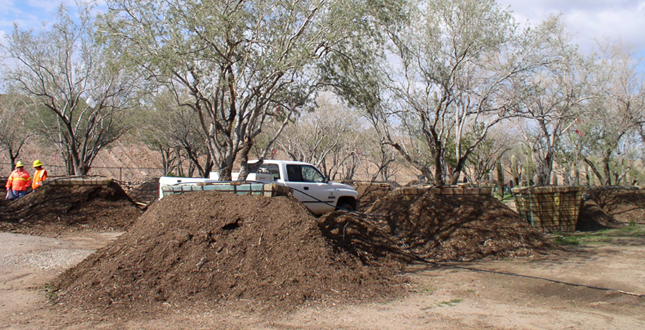 Close Me!
Close Me!Seventy-five of 83 trees survived the boxing process and were placed in the temporary nursery. Seventy trees were sheltered with compost and five trees, randomly selected as a control group, received no compost.
Download Hi-Res ImageImage: Logan Simpson Design Inc.
Image 1 of 11
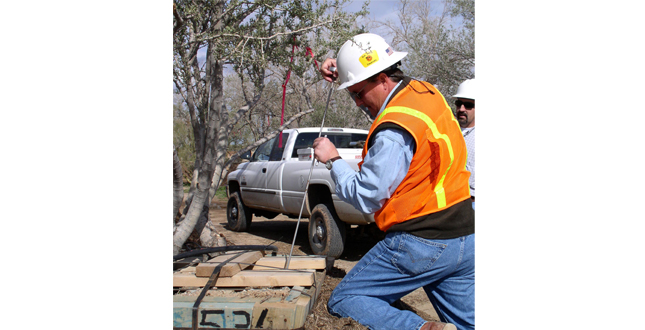 Close Me!
Close Me!Soil temperature was monitored on a weekly basis. The tree boxes protected by compost were an average of 13 degrees F warmer than the control tree boxes during the months of January, February, and March.
Download Hi-Res ImageImage: Logan Simpson Design Inc.
Image 2 of 11
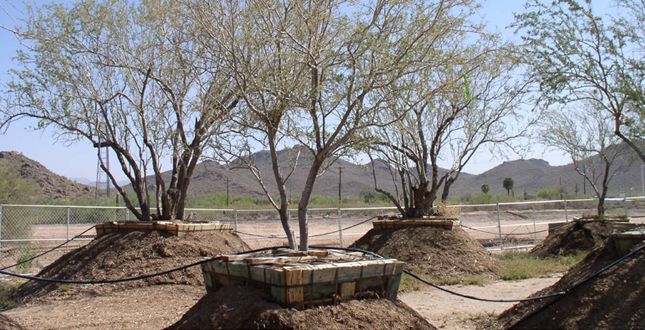 Close Me!
Close Me!Three of the five control trees survived through the nursery storage period, for a survival rate of 60 percent. Fifty-five of the 70 trees sheltered by compost in the nursery survived, for a survival rate of 79 percent.
Download Hi-Res ImageImage: Logan Simpson Design Inc.
Image 3 of 11
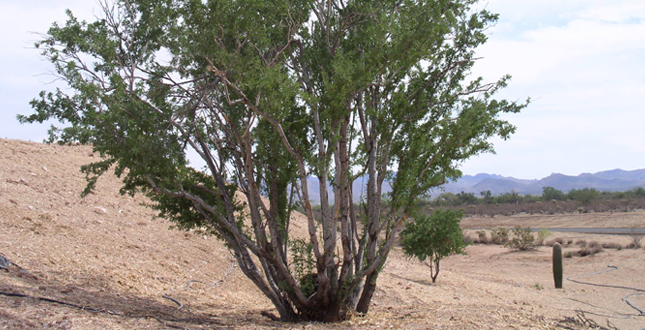 Close Me!
Close Me!This successfully salvaged ironwood tree is helping to re-establish the natural ecosystem of the project area. Ironwood trees serve as nurse plants to more than 70 other Sonoran Desert plant species.
Download Hi-Res ImageImage: Logan Simpson Design Inc.
Image 4 of 11
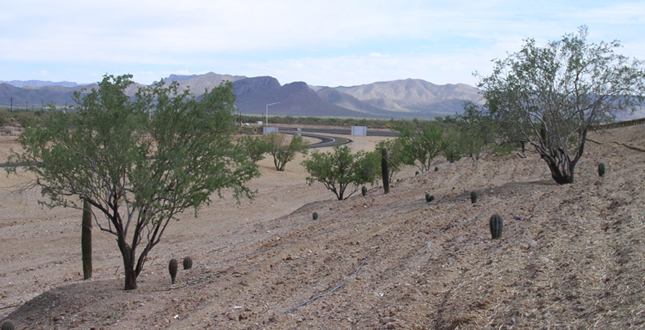 Close Me!
Close Me!The ironwood trees were replanted on the project site in June. Watered twice a week by drip irrigation, all of the 58 replanted trees survived the summer.
Download Hi-Res ImageImage: Logan Simpson Design Inc.
Image 5 of 11
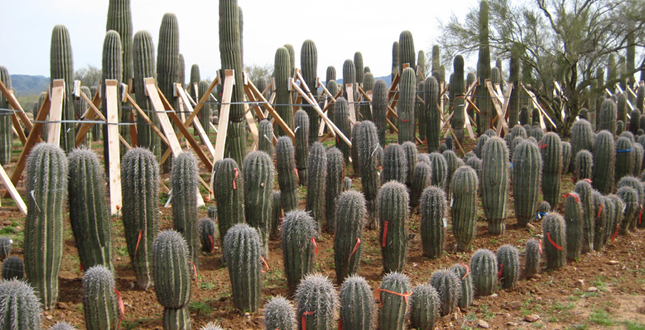 Close Me!
Close Me!Prior to road-building activity, healthy saguaros in the path of construction disturbance are salvaged and placed in a temporary nursery. When construction is complete, the saguaros are replanted as an integral part of the habitat restoration process.
Download Hi-Res ImageImage: Logan Simpson Design Inc.
Image 6 of 11
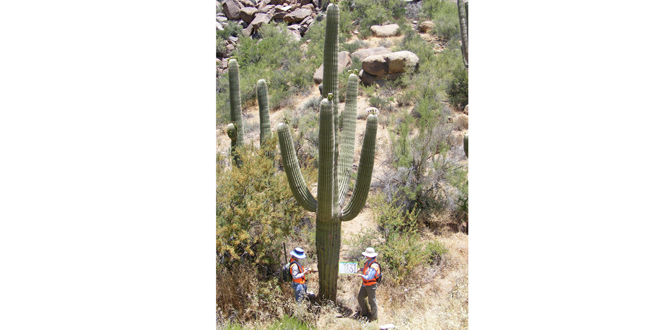 Close Me!
Close Me!A study analyzing the survival rate and health of saguaros salvaged and replanted on Arizona Department of Transportation projects included nearly 1,000 saguaros at four project sites within the Sonoran Desert.
Download Hi-Res ImageImage: Logan Simpson Design Inc.
Image 7 of 11
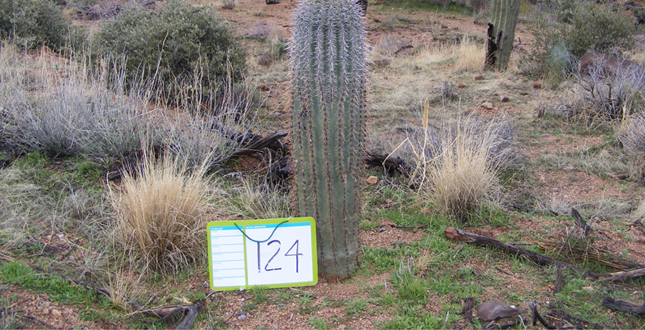 Close Me!
Close Me!Unlike this specimen, transplanted saguaros that did not have a taper in the stem at ground level — indicating that they were planted too deep — exhibited a marked decrease in health.
Download Hi-Res ImageImage: Logan Simpson Design Inc.
Image 8 of 11
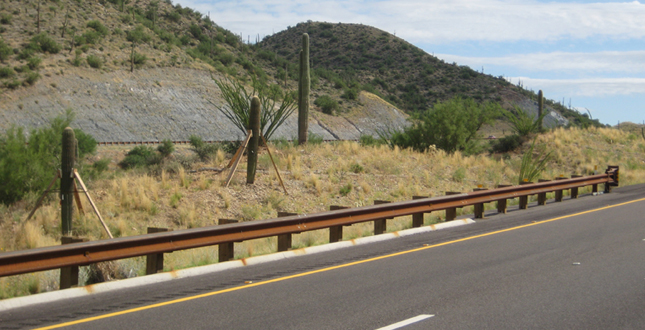 Close Me!
Close Me!Based on the study, future conservation efforts to improve transplanting and follow-up care techniques should focus on relocating younger, shorter saguaros and preserving the older, bigger specimens in place when possible.
Download Hi-Res ImageImage: Logan Simpson Design Inc.
Image 9 of 11
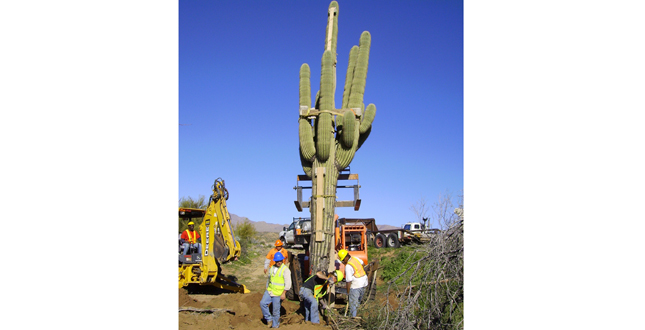 Close Me!
Close Me!The study found that taller saguaros, including those with arms, had a lower survival rate and exhibited poorer overall health than smaller saguaros that are less than 12 feet tall.
Download Hi-Res ImageImage: Logan Simpson Design Inc.
Image 10 of 11
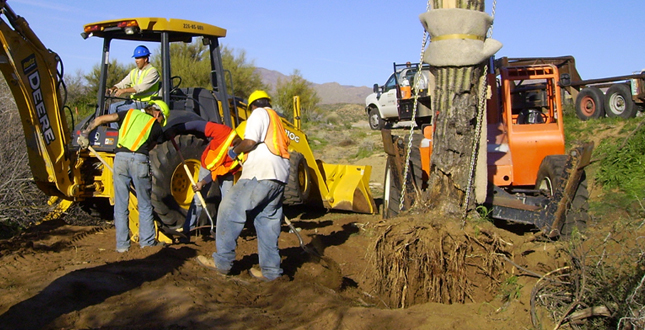 Close Me!
Close Me!Salvaging a large saguaro involves support braces with padding and a chain under the root ball to support the girth and heft of this Sonoran Desert native.
Download Hi-Res ImageImage: Logan Simpson Design Inc.
Image 11 of 11
Project Statement
The Arizona Department of Transportation transplants thousands of Sonoran Desert native plants, including saguaros and ironwood trees, annually. These plants represent a valuable natural resource, contributing to the ecosystem and visual quality of an area. One study looked at the survivability of transplanted saguaros, the other tested a technique for improving survival rates of salvaged ironwood trees. Techniques identified through the studies will help ensure the viability and sustainability of Arizona’s most unique biological resources.
Project Narrative
—2012 Professional Awards Jury
Arizona is home to many rare and unusual plant species found in limited numbers and geographic areas. Two decades ago, the Arizona Department of Transportation (ADOT) began salvaging and transplanting plants protected under Arizona Native Plant Law for highway construction projects. Wanting to preserve iconic plants and maintain highway scenery, ADOT may spend as much as $300,000 on native plant salvage and replanting for every mile of new or improved roadway. The research took the form of an experiment to improve the survival rate of boxed, salvaged ironwood trees and an investigation into the existing methods of salvaging and transplanting Arizona’s iconic saguaro cactus.
The Ironwood tree (Olneya tesota) is an indicator species of the Sonoran Desert region with a low survivability if salvaged during cooler winter months. The trees are long-lived and serve as a source of food and shelter for many species of wildlife. Other desert plants, including saguaros, often grow in the microclimate beneath the canopy of ironwood trees. Their transplant success is highly dependent on their ability to quickly re-grow roots after being boxed and stored in a temporary nursery. In late 2002, ADOT Roadside Development proposed an experimental approach to salvage 83 ironwood trees. The landscape architecture firm designed the research project; assisted in monitoring it; and assembled the results into a final report. As a result of the study, ADOT updated its plant salvage specifications for ironwood trees.
ADOT has salvaged thousands of saguaros (Carnegiea gigantea) from construction zones but prior to this 2007 study, little was known about the survival rate and health of transplanted saguaros. The project team selected for analysis four roadway projects completed between seven and 11 years ago, and tracked the status of 951 transplanted saguaros. The landscape architecture firm designed the research project; assisted in monitoring it; and assembled the results into a final report. The results of the ADOT study are advancing the body of knowledge for the profession, botanical gardens, and others interested in growing the desert giant.
Ironwood Tree Study
How the research is framed
Would the survival rate of salvaged ironwood trees improve if their boxed roots were sheltered (insulated) with compost?
Context and resources of the study
According to devegetation contractors in the Phoenix and Tucson area interviewed by the research team, ironwood trees salvaged from mid-October through mid-March would have a survivability of approximately 30 percent. Because, under cool conditions, little, if any root growth occurs. Researchers hypothesized that the insulating effect of the compost, combined with the heat produced by decomposing organic matter, would stimulate the root growth necessary for transplant success.
Methods
The trees were boxed between November 22 and December 22, 2002 and taken to a temporary nursery where they were watered by drip irrigation. Thirteen cubic yards of compost, including wood mulch, grass clippings and manure, was placed around 70 of the boxed trees; 5 trees, randomly selected as a control group, received no compost. The temperature of the soil in the boxes was monitored on a weekly basis, as was the ambient air temperature and rainfall. Soil temperatures in the tree boxes protected by compost were an average of 13 degrees warmer than the control trees (with no compost) during the coolest months of January, February and March 2003. In June 2003, the trees were replanted on the project site and irrigated.
Results of the investigations
Seventy-five of the 83 trees survived the boxing process and were placed in the temporary nursery. Three of the five control trees survived the nursery storage period, for a survival rate of 60 percent. Fifty-five of the 70 trees sheltered by compost in the nursery survived, for a survival rate of 79 percent. All of the trees planted onto the finished grade, regardless of their nursery protection, survived through the summer of 2003 and exhibited a considerable amount of new foliage growth.
Saguaro Transplant Study
How the research is framed
Was ADOT’s method of salvaging and replanting saguaro cacti effective? And what factors may contribute to the survival and good health of saguaros?
Context and resources of the study
ADOT projects involving saguaro salvage and replanting are typically tracked for up to two years following completion of the roadway work. Never before has there been a follow-up study of this magnitude analyzing the survival rate and health of transplanted saguaros.
The ADOT Technical Advisory Committee (TAC) and the research team developed a set of criteria with which to evaluate the individual saguaros. Among the criteria were: plant size, plant health, aspect, plant orientation relative to original growing condition (indicated by north mark), slope, planting substrate (cut or fill material), amount of rock in the soil, amount of vegetative cover around the plant, taper in the stem at ground level, presence of a basin for rainwater harvesting, and presence of habitat for wildlife.
Methods
The research team obtained project records including the original plant inventories, photos, replanting plans, planting details, and other project information for the four projects selected for analysis. An inventory number was assigned to all existing saguaros, living or dead, and a photo was taken of each plant. A GPS unit recorded the location of the saguaros and data regarding plant size and health, and surrounding environmental conditions such as soil type, slope, aspect, and vegetation. Researchers looked for tapering of the saguaro stem at ground level, an indication of proper planting depth, and presence of a mark showing if the saguaro faced the same direction as it had originally.
Results of the investigations
Seventy-one percent of 951 saguaros recorded as having been replanted survived. Researchers located 768 of the recorded cactuses. The other 183 were presumed dead. Consistent among the four projects inventoried was the finding that the taller saguaros had a lower survival rate and exhibited poorer health. The survival rate was 75 percent for cactuses up to 12 feet in height, compared to 63 percent for cactuses 12 feet and taller. A third variable affecting saguaro survivability and health was taper in the main saguaro stem at ground level. A marked decrease in health was observed among saguaros that did not have taper, an indication that they were planted too deep. Researchers concluded ADOT's approach is working but recommended focusing restoration efforts on saguaros 12 feet in height or less, and planting the larger, specimen saguaros with arms only in highly visible areas for scenic effect, or to provide diversity of life stages. The results relative to steepness of slope, aspect, cut versus fill, the amount of rock in the soil, the amount of vegetative cover, and basins for water harvesting were varied, such that a determination could not be made regarding their effect on saguaro survivability and health.
The Lesson Value of the Research Conclusions to the Field at Large
A number of agencies within the Sonoran Desert are requiring that native trees and saguaro be salvaged prior to construction activity, and the results of these experiments should improve the survivability of plants. The findings of the ironwood and saguaro research projects provide design professionals and others involved in revegetation projects an opportunity to improve the process of salvaging and replanting cacti and desert trees. This not only provides a cost savings to the client, but also promotes sustainable practices and contributes to the long term viability of the desert ecosystem.
Project Resources
Client: The Arizona Department of Transportation (ADOT)
Manager, Roadside Development Section: LeRoy Brady, FASLA and Statewide Project Management : Vicki Bever
ADOT Personnel: Bob Black; Sharon Chavez; Lenyne Hickson; Sandra Livingood; Robert Lozano; Sue Olson; Vivian Spencer; and Bob Wade
Sun Valley Landscape
Technical Advisory Committee (TAC)
Chairman: Steve Thomas. Estomih (Tom) Kombe, Ph.D.
Committee members: LeRoy Brady; Vicki Bever; Mike Daehler; Tao Fong; Ted Littlefield, ASLA; and Matt Moul
Federal Highway Administration (FHWA)
Desert Botanical Garden
Cathy Babcock
Stantec
Gaylon Drake






